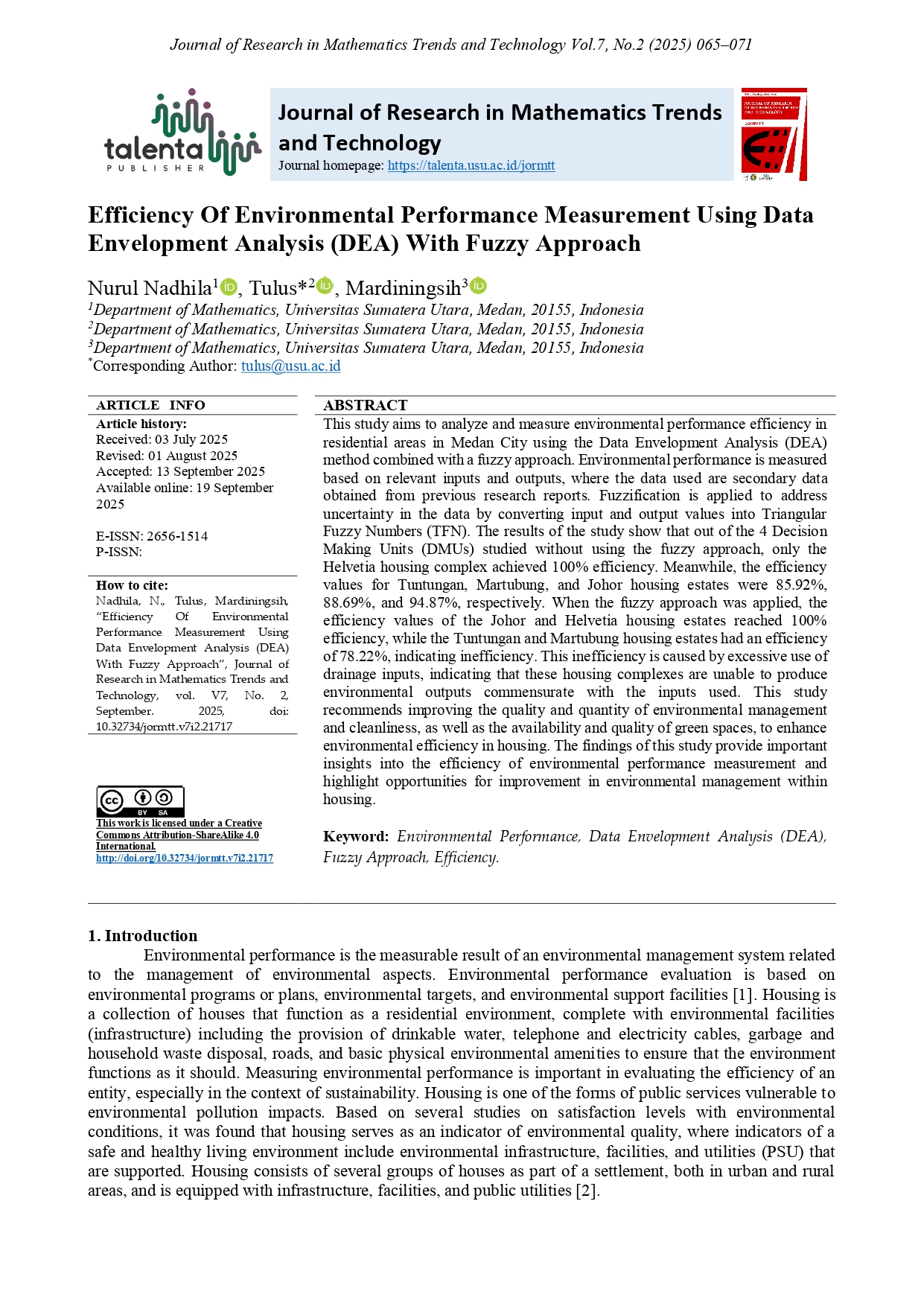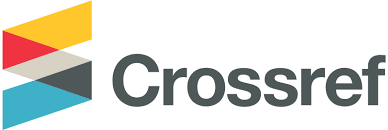Efficiency of Environmental Performance Measurement Using Data Envelopment Analysis (DEA) With Fuzzy Approach
English
DOI:
https://doi.org/10.32734/jormtt.v7i2.21717Abstract
This study aims to analyze and measure environmental performance efficiency in residential areas in Medan City using the Data Envelopment Analysis (DEA) method combined with a fuzzy approach. Environmental performance is measured based on relevant inputs and outputs, where the data used are secondary data obtained from previous research reports. Fuzzification is applied to address uncertainty in the data by converting input and output values into Triangular Fuzzy Numbers (TFN). The results of the study show that out of the 4 Decision Making Units (DMUs) studied without using the fuzzy approach, only the Helvetia housing complex achieved 100% efficiency. Meanwhile, the efficiency values for Tuntungan, Martubung, and Johor housing estates were 85.92%, 88.69%, and 94.87%, respectively. When the fuzzy approach was applied, the efficiency values of the Johor and Helvetia housing estates reached 100% efficiency, while the Tuntungan and Martubung housing estates had an efficiency of 78.22%, indicating inefficiency. This inefficiency is caused by excessive use of drainage inputs, indicating that these housing complexes are unable to produce environmental outputs commensurate with the inputs used. This study recommends improving the quality and quantity of environmental management and cleanliness, as well as the availability and quality of green spaces, to enhance environmental efficiency in housing. The findings of this study provide important insights into the efficiency of environmental performance measurement and highlight opportunities for improvement in environmental management within housing.
Downloads

Downloads
Published
How to Cite
Issue
Section
License
Copyright (c) 2025 Journal of Research in Mathematics Trends and Technology

This work is licensed under a Creative Commons Attribution-ShareAlike 4.0 International License.
Authors submitting a manuscript do so on the understanding that if accepted for publication, copyright of the article shall be assigned to Journal of Research in Mathematics Trends and Technology (JoRMTT) and Faculty of Mathematics and Natural Sciences as well as TALENTA Publisher Universitas Sumatera Utara as publisher of the journal.
Authors still retain the rights to use and share the published articles without written permission from JoRMTT, as long as they follow the Creative Commons Licensing Terms as set forth by Creative Commons. Authors responsible to obtain the license or related copyright issues in their works. JoRMTT shall be released of any liabilities should any problems arise due to authors errors in this matter.
Authors permit JoRMTT to publish and provide the manuscripts in all forms and media for the purpose of publication and dissemination.
JoRMTT will follow COPE Code of Conduct and Best Practice Guidelines for Journal Editors to protect the research results and takes allegations of any infringements, plagiarisms, ethical issues, and frauds should those issues arise. The manuscript is attributed as authors' work, and are properly identified.
The Copyright Transfer Form can be downloaded here.
The copyright form should be signed originally and sent to the Editorial Office in the form of original mail or scanned document.
Users are free to:
- Share (copy and redistribute the material in any medium or format)
- Adapt (remix, transform, and build upon the material)
under the following terms:
- Attribution (must give appropriate credit, provide a link to the license, and indicate if changes were made. You may do so in any reasonable manner, but not in any way that suggests the licensor endorses you or your use)
- NonCommercial (may not use the material for commercial purposes)
- ShareAlike (If you remix, transform, or build upon the material, you must distribute your contributions under the same license as the original)
- No additional restrictions (You may not apply legal terms or technological measures that legally restrict others from doing anything the license permits)
Notices:
You do not have to comply with the license for elements of the material in the public domain or where your use is permitted by an applicable exception or limitation.
No warranties are given. The license may not give you all of the permissions necessary for your intended use. For example, other rights such as publicity, privacy, or moral rights may limit how you use the material.












